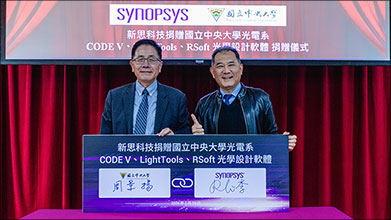Cloud native EDA tools & pre-optimized hardware platforms
Have you been following the progress of the James Webb Space Telescope (JWST) as it proceeds towards L2 (second Lagrange point, where the gravity from the sun and earth balance the orbital motion of a satellite)? The JWST will be parked at L2 to provide a glimpse back into the formative times in our universe, while spending a minimum of energy to remain in a fixed position. If you are curious about this amazing development in space instrumentation and the science of our universe, have a look at this great NASA website to learn more: Where Is Webb? NASA/Webb.
From this page, you’ll see up-to-the-second notifications on the progress of the telescope, like this one:

Screen capture of NASA Goddard Space Flight Center website – 5 January 2022
Importance of STOP Analysis
For a complex optical system such as the James Webb Space Telescope, structural and thermal analyses are key to modeling the effects of mechanical, gravitational, and thermal influences on the optical system. This helps ensure the system can perform as expected after being subjected to the rigors of space launch and flight. Since the system will encounter temperature variations on the order of 200 degrees Celsius, it is crucial to understand how the system will behave ahead of time using accurate system simulations.

Segmented telescope model in CODE V; structural supports included in model
Efficient modeling makes it easier to understand the impact of external influences on optical system performance and will save you time and money when bringing your optical designs to life.
Synopsys CODE V optical design software offers effective Structural, Thermal and Optical Performance (STOP) analysis supported by Sigmadyne SigFit Mechanical and Optical Analysis Software. You can model changes in optical system components due to external thermal or structural loading and stress to learn how these changes impact optical system performance. The effects on the geometry and materials can then be seamlessly transferred back to CODE V to examine the performance with various optical analysis metrics such as MTF and RMS wavefront error.
Ultimately, these simulations are critical to successful system design in many applications. The optical system functions as a part of a whole and understanding how the other components in the system will influence the optical performance is a key reason why STOP analysis is so important.
Finite Elements: FEA to Optical System Impacts
Part of the process is developing a model that can communicate the impact on surfaces and materials clearly from the mechanical influences in an optical system. CODE V has a variety of surface types and programming constructs to model these impacts. Working in conjunction with SigFit, engineers can take details from a finite element analysis (FEA) and see the resulting impacts on optical model surfaces and materials in CODE V.

STOP Analysis: Not Just for Space Optics
But STOP analysis also plays an important role in systems right here on Earth. For example, complex medical devices or integrated LiDAR systems can face interesting environmental and operating conditions. There may be high temperatures or gradients, humidity or mechanical considerations that impact system performance. Understanding these effects prior to building hardware — and as input to the choices for building hardware — is a great asset and benefit of performing these types of analyses during the design and optimization phase of optical system creation. STOP analysis can help you understand impacts on optical materials and transmissive designs built for many purposes.

Finite element model and imaging optics model in CODE V
To learn more about how STOP Analysis in CODE V, check out the recording to the recent webinar from SolvNetPlus (account required) and get in touch with us for any questions.










